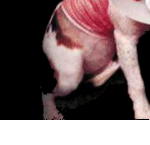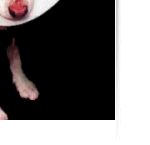Click here to go back.
TREATING CANCER IN ANIMALS
Researchers test potential cancer treatments on animals, refuting the evidence that animal data cannot be accurately applied to humans. Many drugs kill tumors in animals without harming the animal; once released to the public, humans either are unaffected by the drug, or harmed by it.
In a fifteen-year period, scientists tested over 500,000 compounds on animals to determine anti-cancer effects. Only eighty advanced to clinical trials, and only twenty-four of these displayed any anti-cancer activity in humans. Of these, only twelve progressed to chemotherapy. Twelve out of 500,000, after fifteen years and billions of dollars. What wasn’t widely known was that these twelve compounds’ ability to fight cancer was already known through study of their chemical structures.
The National Cancer Institute (NCI), America’s leader in cancer research, tested 40,000 different plant species on animals over a 25-year period, looking for anti-tumor treatments. Many proved effective in treating cancer in the animals, but not one worked in humans; they were either ineffective or toxic. Twenty-five years of wasted time and money, animals’ confinement and anguish, all for naught.
The experimental drug TRAIL1 successfully killed tumors in animals, but also killed liver cells when given to humans. Subsequent clinical trials and debate over liver toxicity has resulted in
Mitoxantrone was successfully tested on dogs as a potential cancer treatment; when used in humans, it caused heart failure. In 2005, the FDA issued a “black box” warning for mitoxantrone. The FDA reissued this warning in 2008 because of low compliance.2 In 2010, the FDA issued a boxed warning that mitoxantrone treatment increases the risk of developing secondary leukemia in cancer and MS patients.3
Cancer researchers have been able to cure cancer in animals for decades, yet not one of these discoveries has been successful in humans. Animal experimentation will not give us the treatments and cures we hope for. Animal experimentation will not heal us.
1. TRAIL receptor–mediated JNK activation and Bim phosphorylation critically regulate Fas-mediated liver damage and lethality. Nadia Corazza ... Pascal Schneider, Thomas Brunner, J Clin Invest. 2006;116(9):2493-2499. doi:10.1172/JCI27726.
3. http://www.fda.gov/safety/medwatch/safetyinformation/ucm219174.htm







